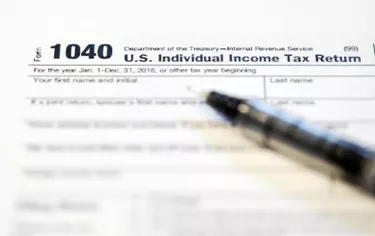
When you receive your W-2 form at the end of the year to document your taxable income, you might notice "Cafe 125" with an amount next to it on your form. That designation refers to amounts on which you don't have to pay income taxes, and potentially payroll taxes, because you chose to receive a specific employee benefit rather than cash. The term "Cafe 125" is short for "cafeteria plan," and the tax code section that authorizes the favorable tax terms.
Understanding how cafeteria plans work helps you make wise decisions when it comes to selecting your employee benefits to lessen the taxes you'll pay.
Video of the Day
Video of the Day
Consider Also: W-2 Forms: What It is, Who Gets One & How it Works
How Cafeteria Plans Work
In a cafeteria, you can pick and choose the items to put on your tray. That's the same with cafeteria plans: you can pick from benefits presented by your employer. For a limited number of benefits allowed under Section 125 – therefore, the name – your company can set up a cafeteria plan under which employees can receive either the cash or certain benefits.
If you take the cash, it counts as taxable income. But if you select the benefit, your company doesn't include the benefit as part of your taxable income. Therefore, you pay less tax by taking the benefit.
Benefits Available Under Cafeteria Plans
Only certain benefits can be offered in the Section 125 cafeteria plan. Options must include at least one of the following: accident and health benefits, adoption assistance, dependent care assistance, group term-life insurance coverage and health savings accounts.
Other benefits can be offered by your employer but not as part of the Section 125 cafeteria plan. For example, your employer could offer an education benefit under which it would pay for some of your continuing education courses or night school, but unless that benefit qualifies under another section of the code, it counts as taxable income.
Some Options That Don't Qualify
Just like charitable donations need to be made to qualified organizations, so do you have limitations within cafeteria plan rules in order to get tax exemptions. As mentioned before, reimbursement for continuing education does not qualify as well as scholarships. In addition, employer-covered meals will not be exempt under the cafeteria plan. If your company reimburses you for lodging while on a work trip, that will not qualify under the cafeteria plan either.
One other thing to note about qualifications for tax exemption under the cafeteria plan is the employee status. If you are part owner of the company, you may not qualify for a cafeteria plan. For example, if you own more than two percent shares in an S-Corp company, you will not be able to partake in the plan for tax exemptions. Also, sole proprietors and partners can't participate.
Additional Payroll Tax Exemptions
All qualifying cafeteria plan benefits are exempt from income taxes, but not all of them are exempt from payroll taxes – the Social Security tax and the Medicare tax. First, group term-life insurance coverage in excess of $50,000 is subject to payroll taxes. In addition, all adoption assistance benefits are also subject to payroll taxes.
For example, if you receive $3,000 in employer-paid adoption benefits under the cafeteria plan, you wouldn't have to pay income taxes on that $3,000, but you would have to pay both the Social Security tax and the Medicare tax on that benefit.
Consider Also: What Do "Exemptions" Mean on a Tax Return?